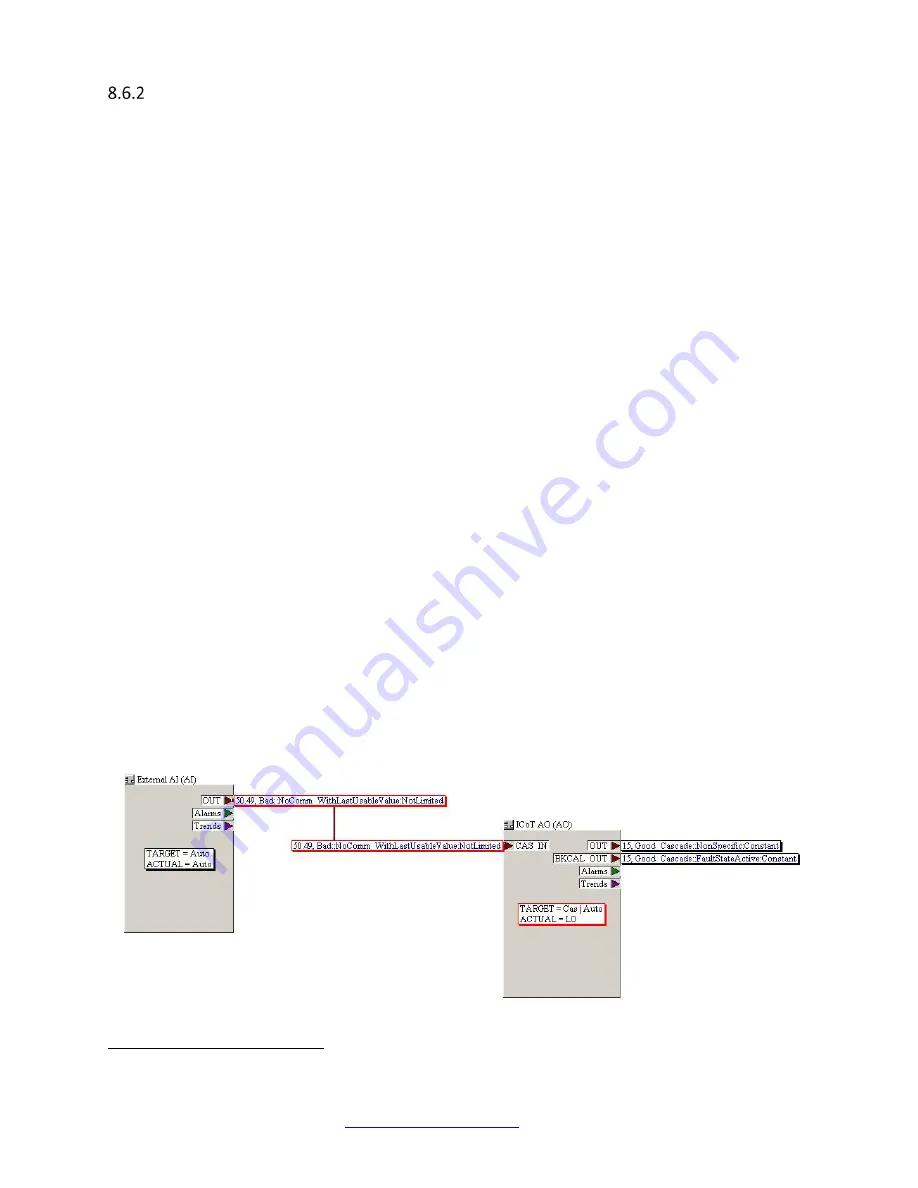
5/12/2017
TECH-538/D.W.O. 23160
Page 47 of 189
Analog output block fault state parameters
The AO block will be present in the majority of the applications (if not in all of them) since it is needed
whenever the ICoT is controlling the valve position. The AO block has standard parameters that allow a
fault state action to be specified on detection of an input with bad status or uncertain quality.
The configuration of these parameters follows the FF specifications for FS. The following parameters may
be configured in the AO:
IO_OPTS
: there are 3 bits in this parameter to control the fault state actions:
•
Bit4:
Fault State to value
. If this bit is set to ‘0’ (Freeze) the output will hold the current value
(freeze) if a fault is detected. If this bit is set to ‘1’ (Go to preset value), the internal SP will follow
the FSTATE_VAL value.
•
Bit5:
Fault State restart
. When this bit is set to ‘1’ the block output will use the value of
FSTATE_VAL parameter restarting the device, otherwise it will use initial value of the OUT
parameter.
•
Bit6:
Target to Manual
. This option in IO_OPTS may be used to latch the FAULT_STATE
parameter. Setting this bit value will cause the target mode to automatically change to MAN
when a fault is detected. Then block may be manually
set to its normal target mode after the
fault conditions are cleared. In case the mode is changed to Auto or Cas and the external
condition which caused the fault state has not been cleared, the device will immediately reenter
in the fault state condition.
STATUS_OPTS
: Among other options, there is one used for the FSTATE condition:
•
Bit0: Propagate Fault Backward
.
If the status of CAS_IN parameter is in “Failure” the block will
propagate it to BKCAL_OUT parameter without generating an alarm. The substatus
“FaulStateActive” indicates the block entered fault state (FS).
•
FSTATE _TIME
: the time, in seconds, from detection of a failure of the output block and action
taken by the block output if the condition still exists.
•
FSTATE_VAL
: the preset SP value to use when a failure occurs. This value will be used if IO_OPTS
= “Fault State to value” is selected.
Typically, a FF alarm will be generated upon transition to a fault state. The alarm should be handled using
the standard alarm handling mechanism present in the FF Host system.
In the following example the ICoT AO block goes to fault state after detecting a bad communication in the
CAS_IN. (See Figure 8-5 – – ICoT AO block in fault state condition)
Figure 8-5 – – ICoT AO block in fault state condition
15
This means that an user action is required to make the block to return to the automatic or cascade
mode.


































